How Sex and the City changed my view of love, motherhood and friendship forever
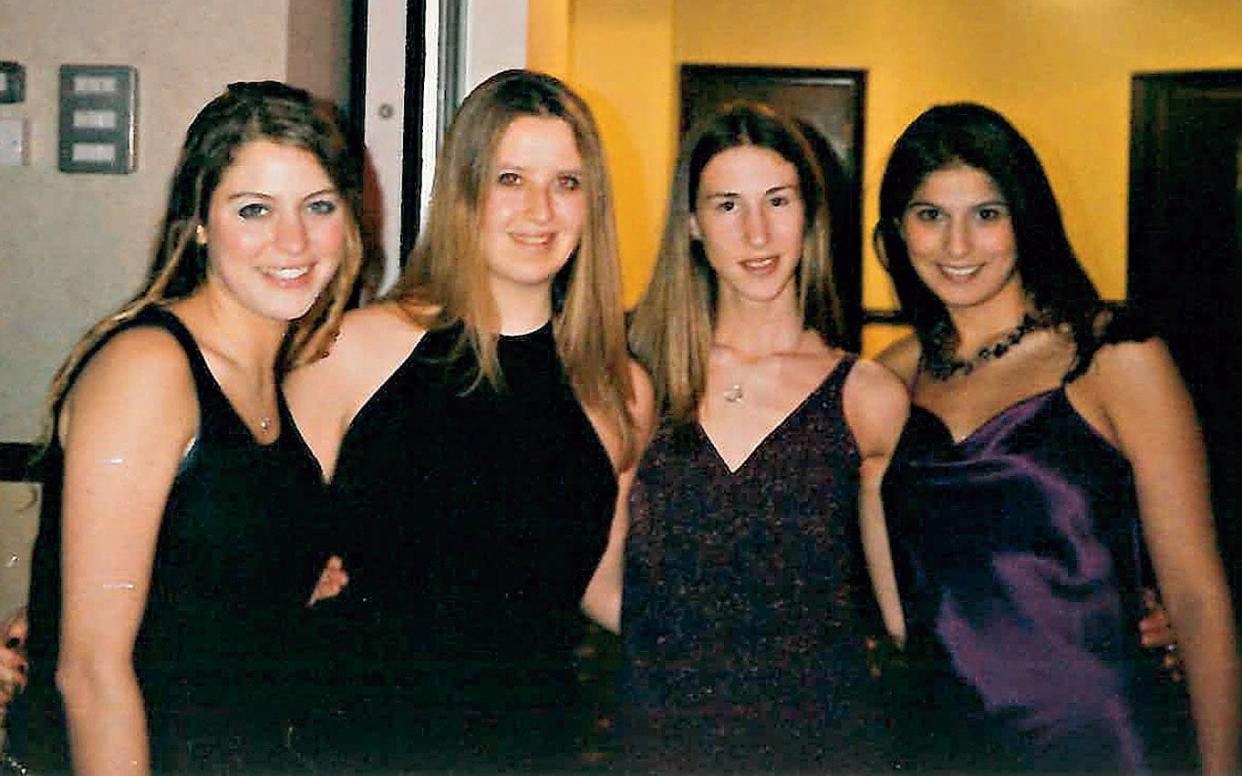
As I watched the trailer for the most hyped revival of the year, I couldn’t help but wonder (à la Carrie Bradshaw, of course)… how Sex and the City changed us.
Cosmopolitans, Manolo Blahniks, nameplate necklaces, girl squads and Sunday brunches would certainly be less of a thing without it. But that understates its power: few hit shows have created a social shift quite like Sex and the City.
For young women of the millennium (that was me at the time), the antics and outlook of Carrie, Miranda, Charlotte and Samantha moulded our approach to love, friendship, motherhood, sex and, of course, fashion. But those to-die-for designer clothes were a feminist statement, too.
Carrie and her crew cared about their careers and spent their money however they pleased (cue Fendi Baguette-adorned fist pump). And as for Carrie’s flamboyant styling, it certainly wasn’t men she was dressing to impress.
I was a 19-year-old university student when the show first aired in the UK in 1999 and, to me, it felt like a feminist manifesto in fabulous, funny, daring and super-stylish form. With the benefit of two decades’ hindsight and a MeToo awakening, there are holes to be picked in that manifesto.
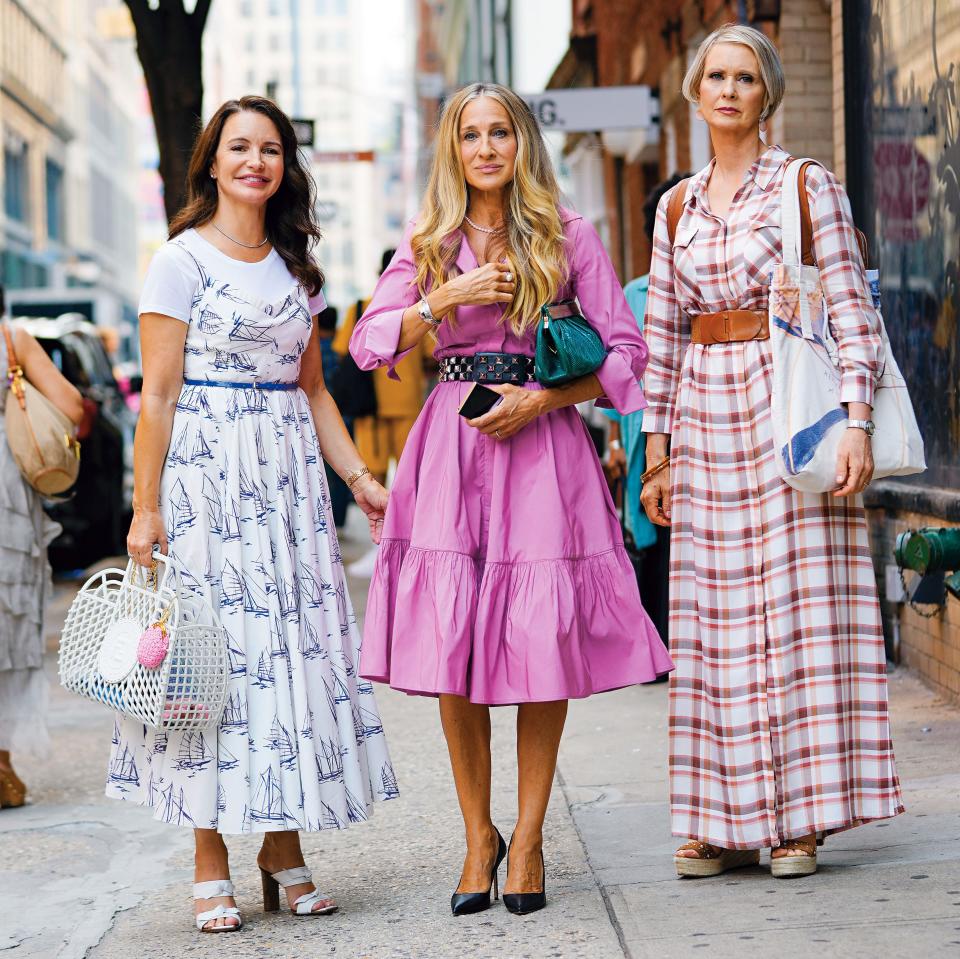
Even Carrie’s designer spending perhaps encouraged a negative narrative about women and their finances – she did, after all, constantly admonish herself for not saving enough for a deposit on an apartment.
But, at the time, what we gleaned overall was to value your independence, have as much fun dating as you can, and treasure your female friendships above all else – while dressing up as frequently and fabulously as possible.
The show celebrated the idea that you don’t need love and marriage to find fulfilment, but it also had a romantic soul – those women were not settling for anything other than the real deal. Along with four million others, I watched the show religiously, huddled on the couch with my girlfriends at our halls of residence.
We pored over every episode, then dissected them in a way our university professors only wished we’d approach our studies. Can women have sex like men? Is jealousy the ultimate aphrodisiac? Does motherhood have to change your identity? Does being attractive count against you in the workplace? Each episode was a mini sociology study – and the ethos of the show seeped into our psyche.
After university, I moved to New York for a stint working as a waitress, went on to study journalism, and I still own a tutu (aged 42), so seep in it certainly did. And although it’s rare that we all still huddle on the same sofa (there are now oceans in the way), we girls have stayed close.
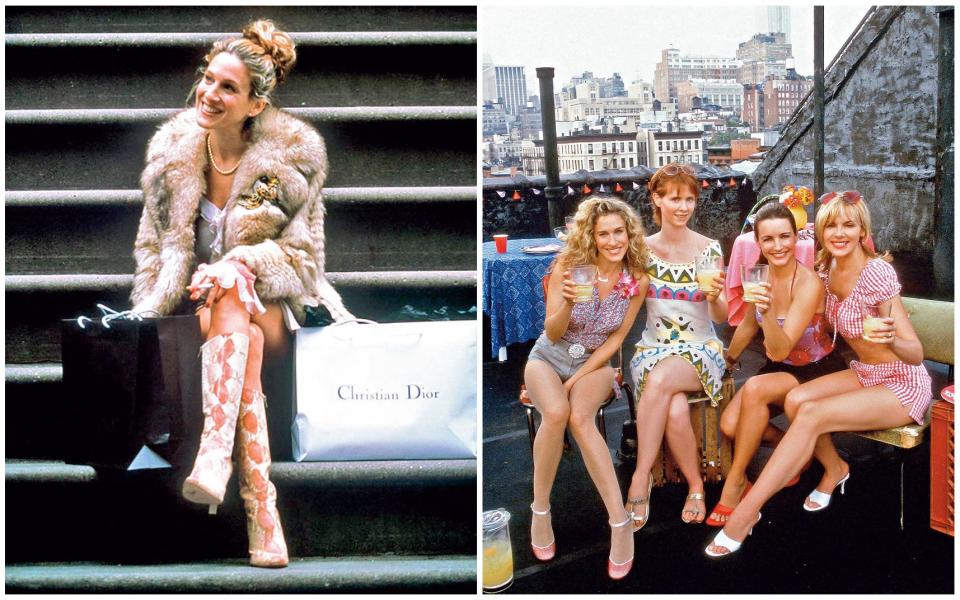
I can’t say it was Carrie and her squad who taught us everything we know about friendship, but they certainly solidified the idea that friends can feel like family too. What felt fresh back then was how much these women shared – nothing was too taboo to be chewed over at brunch. And that attitude of openness became a blueprint for girlfriends everywhere.
Yes, they divulged details of their sex lives, but they also bared their souls about everything from fertility to marital strife, cancer and periods to menopause and, of course, when Miranda’s son Brady came along, motherhood. As the juggling-it-all single mother and high-flying lawyer, Miranda was the original ‘slummy mummy’.
She was utterly imperfect, grappling with guilt, sleepless nights and struggling to balance her own needs with those of her son. At a time when women were starting to view motherhood as a choice rather than a rite of passage, Miranda Hobbs reflected a perspective seldom seen on screen.
‘You really can’t overstate the significance of SATC in its time,’ says Jennifer Keishin Armstrong, author of Sex and the City and Us: How Four Single Women Changed the Way We Think, Live, and Love. ‘We hadn’t seen anything remotely like it before, with female characters talking about sex the way they did and embodying this entirely new kind of single woman.
Single women before this, especially those over 30, were portrayed as sad and spinstery. But these women did not need men and did not apologise for having whatever kind of sex they wanted.’
Even the name was brazen for a prime-time slot and it opened eyes to a new dating world. In the very first episode, Carrie Bradshaw describes that era in New York as ‘the age of un-innocence’. ‘No one has breakfast at Tiffany’s or affairs to remember… we all have breakfast at 7am and affairs we try to forget,’ she laments.
At the turn of the millennium, that fast-paced dating scene seemed the antithesis of romance. Two decades on, in the Tinder age, it now seems positively Brontë-esque. Finding love (or lust) across a crowded bar, even if the intimate moments that ensued ended up being fleeting, feels like good old-fashioned romance.
But back then, one-night stands certainly weren’t mainstream TV fodder. (In all 236 episodes of Friends, which ran from 1994 to 2004, there were only ever a handful.) In that sense, to a certain generation (hi, Mum and Dad) the show may have seemed gratuitous, and perhaps even slightly depraved, but for those of us who were in – or about to hit – our dating years, those women’s love lives were mightily empowering.
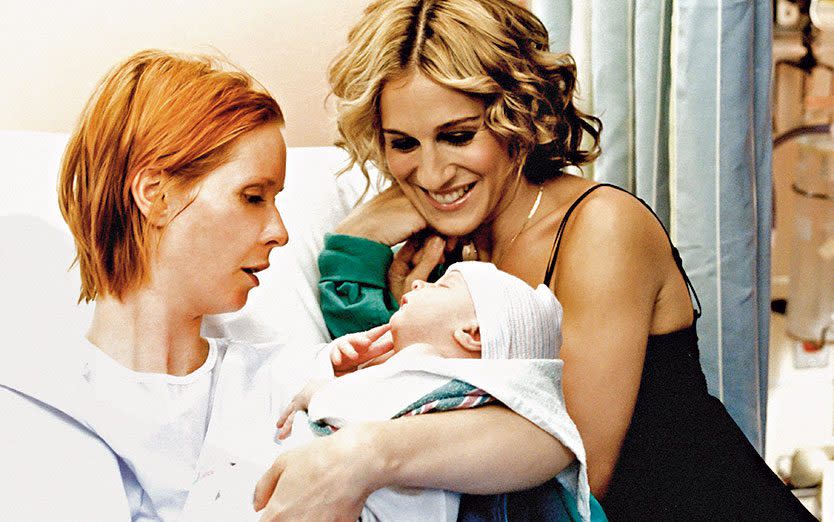
Men were the accessories, they weren’t the raison d’être (other than perhaps for Charlotte at times). And, refreshingly, the bedroom antics were seen from the female perspective – something still groundbreaking today.
Psychosexual therapist Marian O’Connor believes the show created a shift in mindset. ‘Sex and the City showed that women could enjoy sex and initiate it,’ she says, though she points out that the way the show conveyed sex has its downsides, too.
‘Some people can feel a sense of guilt and failure if they can’t enjoy sex or have multiple orgasms,’ she says. ‘Sex and the City set the sexual bar high.’ In reality, Marian adds, recent studies have shown that it’s rare to orgasm on one-night stands.
Samantha, however, had no such trouble and pushed frontiers, both in the bedroom and in love. She might have set the bar high, but the portrayal of her relationship with Smith Jerrod helped break down barriers for older women to date younger men, and her unashamed pursuit of men gave women everywhere permission to make the first move.
For Samantha there was the wrestler, the farmer, her own assistant, a fireman, a priest, and many a barman… until she met the one man she really wanted, Richard Wright. This is where, despite the show’s very many empowering dimensions, it rankles just slightly.
Both Richard and Mr Big, the two hotshots who inspire utter devotion from Samantha and Carrie, treat their women awfully. They’re hard to read, detached, non-committal and, in Mr Big’s case (in the 2008 film), even leave Carrie at the altar.
But what’s most bothersome is that our heroines keep going back for more, reinforcing that misogynistic mindset that even fabulous, confident, successful women allow men to walk all over them. There are of course plenty of men who are walked all over, too – Carrie’s utterly lovable Aidan deserved better and our hearts often went out to Miranda’s lovely Steve – so at least, in the show’s defence, there was balance.
What is uncomfortable, though, in hindsight, is the show’s lack of diversity. For one, where are all New York’s African Americans? None of the recurring characters are black – and there are very few BAME faces on screen at all, something that must surely be addressed in this current series.
But the show’s utter whiteness is also a reminder – if ever we needed one – of how far we’ve come in terms of inclusion. Even the LGBTQ+ presence – although it is there – is as stereotypical as it comes.
Carrie’s bestie Stanford Blatch, played brilliantly by Willie Garson, who passed away in September, was as camp as can be, while Charlotte’s wedding planner and friend Anthony is just about the bitchiest man on TV.
‘There’s definitely a lack of sexual diversity,’ adds Marian. ‘Carrie at one point refers to bisexuality as a “layover on the way to Gay Town”. And the only trans women I remember seeing in the show are depicted as prostitutes in wigs and dresses.’
Given the MeToo culture-quake that has shaken up the way we view sex and power, it’s no surprise that a programme about the politics of casual sex from the ’90s and noughties has some catching up to do.
One notable moment comes in series four when Carrie gets her dream gig at Vogue and her editor, Julian, sees fit to whip off his trousers in front of her in the fashion cupboard. Carrie tells him to pull up his pants and then chooses to work with another editor – but she seems largely to brush off the incident.
One hopes nowadays she would be flagging it with HR – or at least acknowledging the serious side. There’s also the incident when she suffers a ‘sex sprain’ from the guy who likes ‘jackrabbit sex’. Carrie declines round two, but makes up an excuse to spare his feelings. In 2021 it makes uncomfortable viewing.
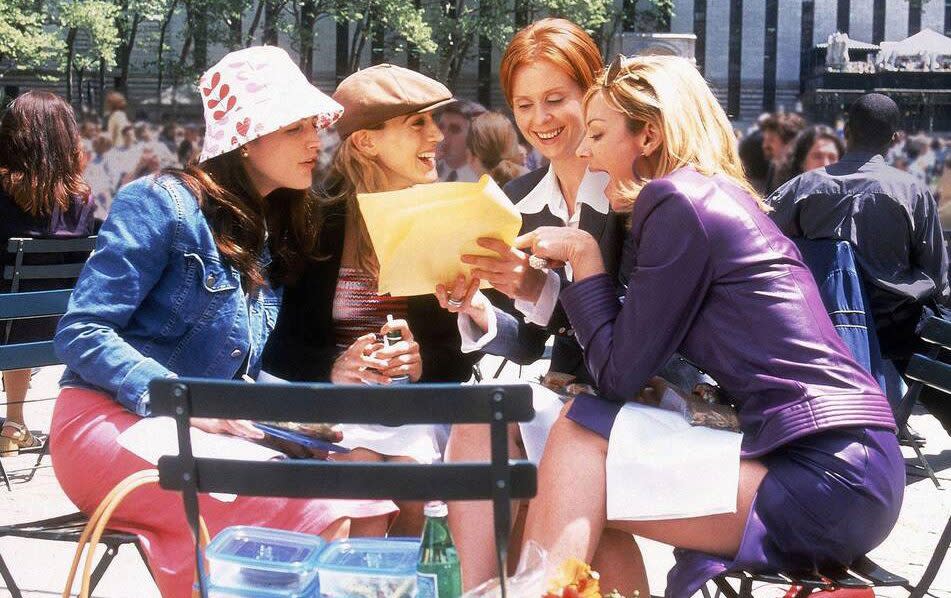
‘Sex and the City is a document of its times,’ Jennifer says. ‘It shows us how women used to believe we simply had to shut up and put up with this kind of treatment. At best we might laugh about it with our friends, which is exactly what Carrie and her friends often do. That in itself was as liberated as many of us could imagine at the time.’
But despite some scenes that give away its age, the series also dealt with issues of misogyny and slut-shaming before they were being called out in the real world. In fact, says Marian, who has been a psychosexual therapist since before the series began, ‘I find women still find it difficult to talk about some of the issues raised in the programme.
There is a still a lack of information and fear around sex: women are still putting up with painful sex, still finding it hard to talk about abortions or one-night stands or even the need for lubricants.’
Will a show as trailblazing in its time as Sex and the City manage to maintain its edge when it returns to screens next week? It’s certainly a tough ask. And initial shots of the crew (minus Samantha) teetering along in sky-high heels did call that into question.
Stilettos may have projected power and confidence in 1999, but in 2021, we’re done putting up with discomfort. Will they don trainers and keep up with the times? And how will they deal with iPhones, Tinder, Net-a-Porter, Covid and Instagram? Well, we’re about to find out. And I, for one, (in the words of Mr Big) ‘absof—kinglutely’ cannot wait.
The men who hit the mark
Mr. Big
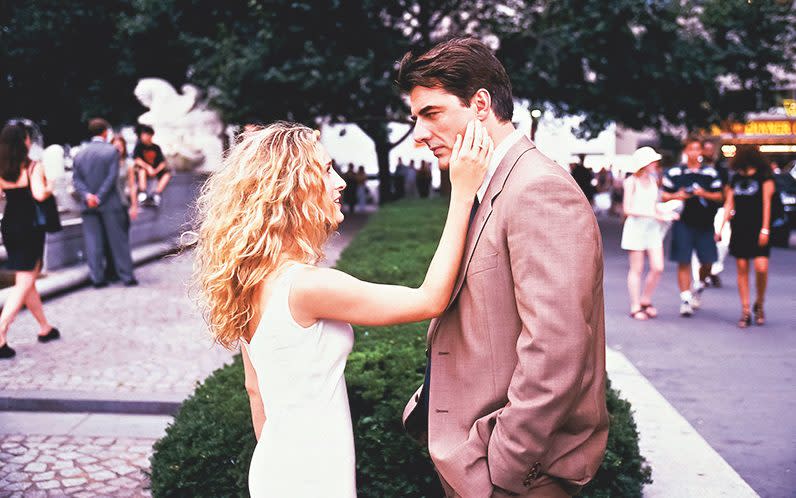
Carrie meets Big (Chris Noth) in the first episode and their on/off romance is a central thread of the show.
Steve Brady
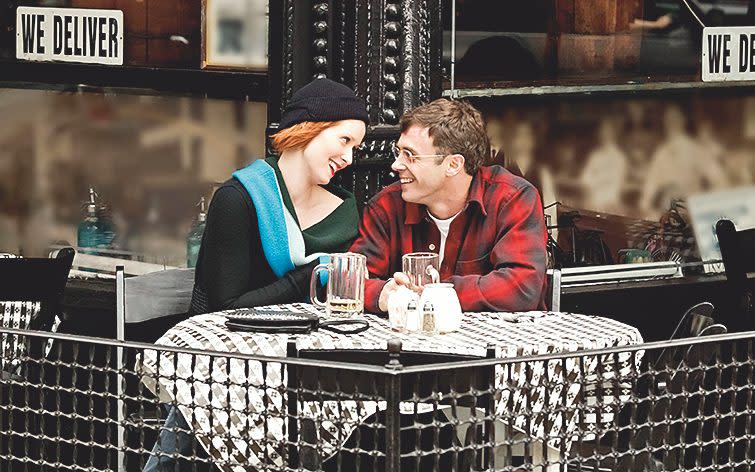
Steve (David Eigenberg) is the nice, steady guy Miranda unexpectedly falls for and settles down with.
Harry Goldenblatt
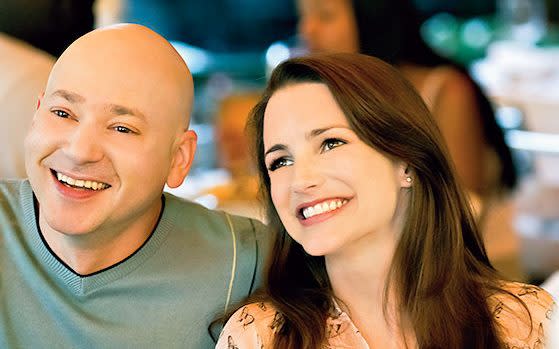
Charlotte is not attracted to Harry (Evan Handler) when they first meet, but his charm wins her over.
Smith Jerrod

Initially Samantha sees Smith (Jason Lewis) as another conquest, but it soon becomes more.
Antony and Stanford
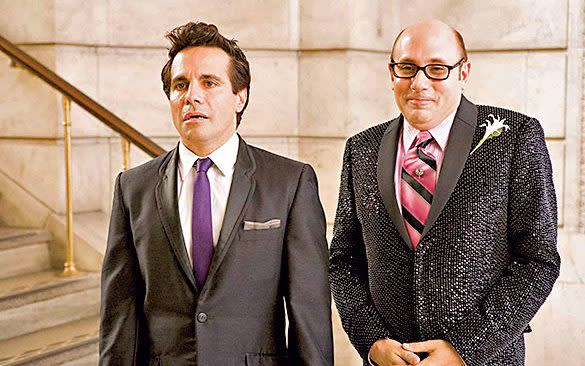
Anthony (Mario Cantone) and Stanford (Willie Garson) are Charlotte and Carrie’s besties.


